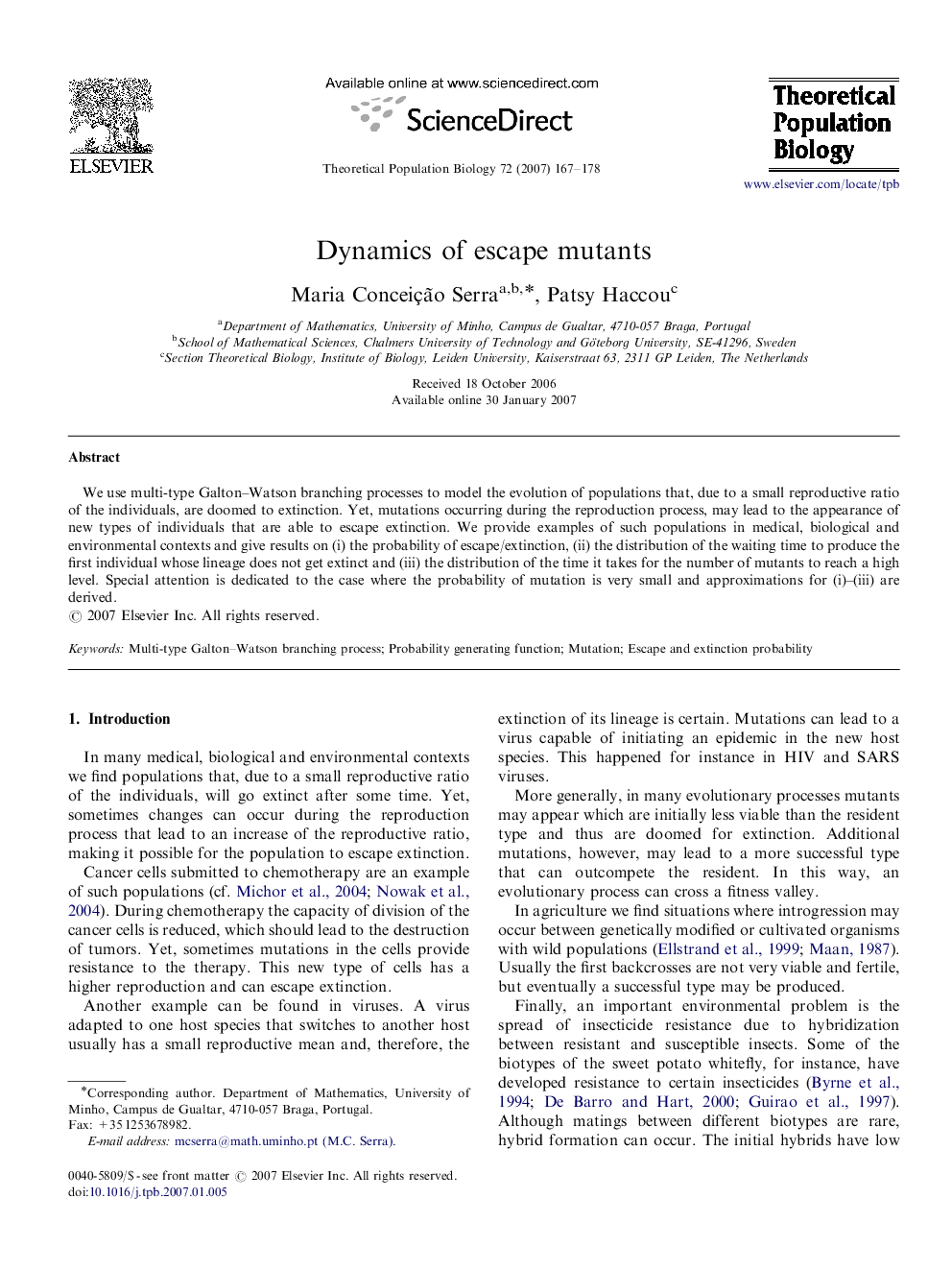| Article ID | Journal | Published Year | Pages | File Type |
|---|---|---|---|---|
| 4502796 | Theoretical Population Biology | 2007 | 12 Pages |
We use multi-type Galton–Watson branching processes to model the evolution of populations that, due to a small reproductive ratio of the individuals, are doomed to extinction. Yet, mutations occurring during the reproduction process, may lead to the appearance of new types of individuals that are able to escape extinction. We provide examples of such populations in medical, biological and environmental contexts and give results on (i) the probability of escape/extinction, (ii) the distribution of the waiting time to produce the first individual whose lineage does not get extinct and (iii) the distribution of the time it takes for the number of mutants to reach a high level. Special attention is dedicated to the case where the probability of mutation is very small and approximations for (i)–(iii) are derived.
